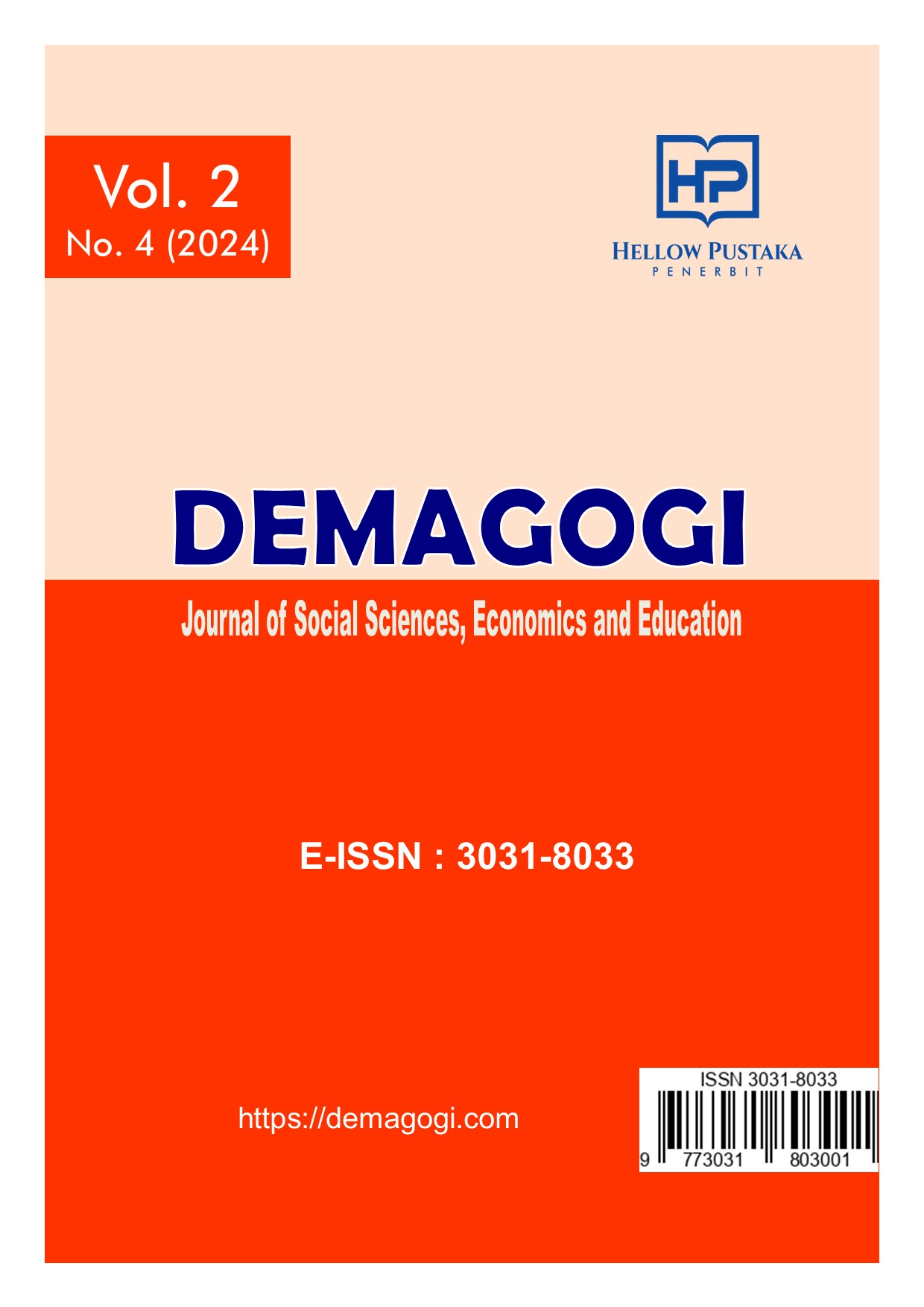Pengembangan Alat Peraga Edukatif Pohon Dikotil Monokotil di SDN 001 Sangatta Utara
DOI:
https://doi.org/10.61166/demagogi.v2i4.50Keywords:
Alat Peraga Edukatif, Pohon Dikotil, Pohon Monokotil, Pembelajaran BiologiAbstract
Abstrak. Alat peraga edukatif merupakan salah satu media yang sangat efektif dalam meningkatkan pemahaman siswa tentang konsep-konsep ilmiah, khususnya dalam bidang biologi. Penelitian ini bertujuan untuk mengembangkan alat peraga edukatif berupa model pohon dikotil dan monokotil yang dapat digunakan dalam pembelajaran di sekolah menengah. Metode yang digunakan meliputi tahap perencanaan, desain, pembuatan, dan uji coba alat peraga. Hasil penelitian menunjukkan bahwa alat peraga yang dikembangkan dapat meningkatkan pemahaman siswa terhadap karakteristik dan perbedaan antara pohon dikotil dan monokotil. Selain itu, alat peraga ini juga mendapat respon positif dari guru dan siswa.
Downloads
References
Referensi
**Raven, P. H., Evert, R. F., & Eichhorn, S. E. (2012). *Biology of Plants* (8th ed.). W. H. Freeman and Company.**
**Mauseth, J. D. (2014). *Botany: An Introduction to Plant Biology* (5th ed.). Jones & Bartlett Learning.**
**Woodward, C., & Chetcuti, D. (2011). The Use of Visual and Kinesthetic Learning Tools in Biology Education. *Journal of Biological Education, 45*(4), 223-230.**
**Departemen Pendidikan dan Kebudayaan Republik Indonesia. (2013). Kurikulum 2013: Kompetensi Dasar Sekolah Menengah Pertama (SMP)/Madrasah Tsanawiyah (MTs). Jakarta: Depdikbud.**
**Johnson, S., & Mayer, R. E. (2010). Applying the Segmenting and Pre-training Principles: Managing Complexity in Multimedia Learning. *Journal of Educational Psychology, 102*(2), 311-320.**
**Hall, R., & Lucero, A. (2012). Design and Assessment of Biodegradable Teaching Tools for Plant Biology. *Environmental Education Research, 18*(3), 329-347.**
**UNESCO. (2014). Roadmap for Implementing the Global Action Programme on Education for Sustainable Development. Paris: UNESCO.**
Arends, R. I. (2012). Learning to Teach. McGraw-Hill Education.
Hamdani. (2013). Strategi Pembelajaran Berorientasi Standar Proses Pendidikan. Remaja Rosdakarya.
Raven, P. H., Evert, R. F., & Eichhorn, S. E. (2012). *Biology of Plants* (8th ed.). W. H. Freeman and Company.
Mauseth, J. D. (2014). *Botany: An Introduction to Plant Biology* (5th ed.). Jones & Bartlett Learning.
Woodward, C., & Chetcuti, D. (2011). The Use of Visual and Kinesthetic Learning Tools in Biology Education. *Journal of Biological Education, 45*(4), 223-230.
Smith, M. K., & Knight, J. K. (2012). Using the Genetics Concept Assessment to Document Persistent Conceptual Difficulties in Undergraduate Genetics Courses. *CBE—Life Sciences Education, 11*(2), 248-259.
UNESCO. (2014). Roadmap for Implementing the Global Action Programme on Education for Sustainable Development. Paris: UNESCO.
Johnson, S., & Mayer, R. E. (2010). Applying the Segmenting and Pre-training Principles: Managing Complexity in Multimedia Learning. *Journal of Educational Psychology, 102*(2), 311-320.**
Hall, R., & Lucero, A. (2012). Design and Assessment of Biodegradable Teaching Tools for Plant Biology. *Environmental Education Research, 18*(3), 329-347.
National Science Teachers Association (NSTA). (n.d.). Resources for Teaching Plant Biology. Retrieved from [NSTA website](https://www.nsta.org).
World Wildlife Fund (WWF). (2015). Green Classrooms: Eco-friendly Teaching Materials and Practices. Retrieved from [WWF website](https://www.worldwildlife.org).
Downloads
Published
How to Cite
Issue
Section
License
Copyright (c) 2024 Widia Ningsih, Farida Catur Wahyu Anggriyani

This work is licensed under a Creative Commons Attribution 4.0 International License.
















